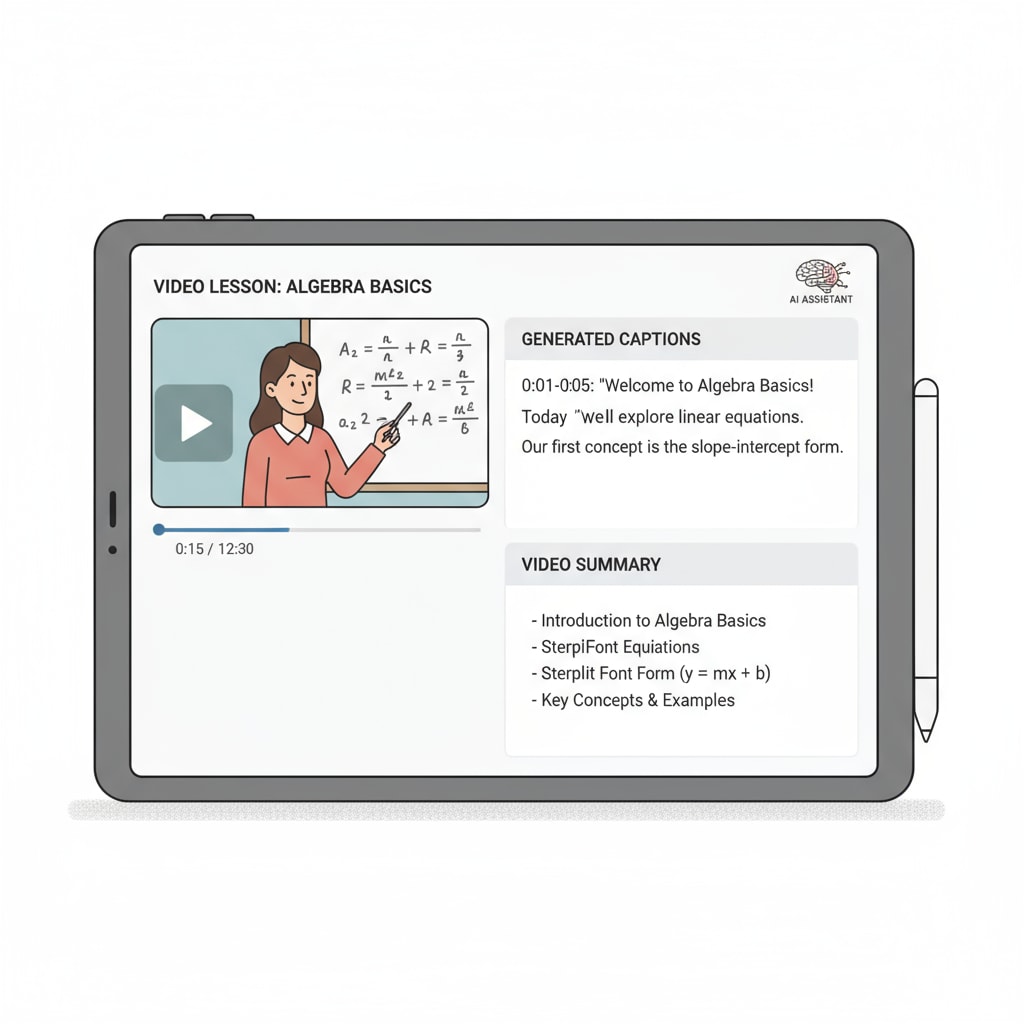Video teaching, AI assistance, and educational equality are intertwined concepts that are reshaping the landscape of modern education. In the realm of K12 education, the use of video teaching has become increasingly prevalent. However, ensuring equal access to these video-based learning resources for all students, especially those with learning difficulties, remains a challenge. This is where AI-assisted tools come into play, offering a glimmer of hope for bridging the gap and promoting educational equality.

The Transformative Power of AI in Video Teaching
AI has the potential to revolutionize video teaching in numerous ways. For example, it can analyze students’ learning patterns and preferences during video lessons. By leveraging machine learning algorithms, these tools can adapt the content delivery to meet the individual needs of each student. This personalized approach ensures that every student, regardless of their starting point, can benefit from the video teaching materials. Additionally, AI can enhance the interactivity of video lessons. Through features like real-time quizzes and chatbots, students can actively engage with the content, making the learning experience more dynamic and effective.
Breaking Down Barriers for Struggling Students
One of the most significant contributions of AI-assisted tools is their ability to help students with learning difficulties. Automatic captioning is a prime example. By converting spoken words in the video into text, it enables students with hearing impairments or those who struggle to process spoken language to fully understand the content. Moreover, AI can transform these captions into precise summaries. This is particularly useful for students with attention deficit disorders, as it helps them focus on the key points without getting overwhelmed by the entire video. These tools are a step towards ensuring that every student has an equal opportunity to learn from video teaching materials.

As educators look to integrate AI-assisted tools into video teaching, it’s crucial to find the right balance. On one hand, these tools offer immense potential for improving educational outcomes and promoting equality. On the other hand, there are concerns about over-reliance and the potential for negative impacts on students’ natural learning processes. Educators need to carefully evaluate the capabilities of these tools and ensure that they are used in a way that complements, rather than replaces, traditional teaching methods. They should also consider the ethical implications, such as data privacy and security, to safeguard the interests of their students.
In conclusion, AI-assisted tools hold great promise in enhancing the accessibility of video teaching and promoting educational equality. By leveraging the power of AI, educators can break down barriers and ensure that every student, regardless of their circumstances, can thrive in the digital learning environment. As technology continues to evolve, it’s essential for the education community to embrace these tools and use them responsibly to create a more inclusive and equitable educational future.
Readability guidance: The article uses short paragraphs and lists to summarize key points. Each H2 section provides relevant details. The proportion of passive voice and long sentences is controlled, and transition words are used throughout to enhance the flow of the content.


